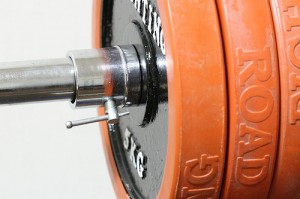“Hopefully now you understand that damage and soreness are not necessarily bad things, but instead are essential triggers for the adaptations we all seek to improve performance.”
– Steve Magness, Running Times
The previous post on supplements got me thinking about various articles I’ve read recently on the possible negative effect that antioxidants may have on endurance training. Here is some information to consider.
Alex Hutchinson writes a blog called Sweat Science. He also writes a column called Jockolgy for the Toronto Globe and Mail and he’s written articles for the New York Times, Runner’s World and Popular Mechanics. Beyond that he’s your ordinary, every day physicist and elite-level distance runner. Seems like a smart guy to me. I listen to what he has to say.
He recently wrote a piece titled The case against antioxidant vitamin supplements. It’s of a similar theme as an earlier post called Does Vitamin C block gains from training? Both posts suggest the idea that supplementing with antioxidants may inhibit the training effects we want from strenuous workouts. This may seem counter to what many of us have been told.
Science tells us that antioxidants protect us from cellular damage done by free radicals. Free radicals are produced by strenuous exercise. So recent conventional wisdom says that we can protect our bodies by taking antioxidant supplements such as Vitamins C and E.
New research though is telling us that our supplementation may be interfering with the cycle of stress and adaptation that a workout provides. Hutchinson refers to research in the latest issue of Sports Medicine that supports this concept. He cites the following (The ROS mentioned are free radicals.):
“The traditional theory goes like this: strenuous exercise produces “reactive oxygen species” (ROS), which cause damage to cells and DNA in the body. Taking antioxidant supplements like vitamins C and E helps to neutralize the ROS, allowing the body to recover more quickly from workouts.”
“The new theory, in contrast, goes like this: strenuous exercise produces ROS, which signal to the body that it needs to adapt to this new training stress by becoming stronger and more efficient. Taking antioxidant supplements neutralizes the ROS, which means the body doesn’t receive the same signals telling it to adapt, so you make smaller gains in strength and endurance from your training.”
“The new paper comes down firmly on the side of the latter view:”
“The aim of this review is to present and discuss 23 studies that have shown that antioxidant supplementation interferes with exercise training-induced adaptations. The main findings of these studies are that, in certain situations, loading the cell with high doses of antioxidants leads to a blunting of the positive effects of exercise training and interferes with important [reactive oxygen species]-mediated physiological processes, such as vasodilation and insulin signalling.”
The researchers conclude with the following statement:
“We recommend that an adequate intake of vitamins and minerals through a varied and balanced diet remains the best approach to maintain the optimal antioxidant status in exercising individuals.”
All of these ideas and observations are similar to the views expressed by exercise scientist and running coach Steve Magness in his article When Damage is a Good Thing in Running Times. His article discusses not only antioxidant intake but also ice baths, anti-inflammatories, and carbohydrate drinks. If you’re an endurance athlete then you should definitely read the article. Magness sums up things well with the following statement:
“Hopefully now you understand that damage and soreness are not necessarily bad things, but instead are essential triggers for the adaptations we all seek to improve performance. The goal should not necessarily be to minimize them automatically, but instead to work with them–this means allowing for enough damage to take place to initiate adaptation and then allowing for the body to go through its natural recovery response before trying to aid recovery. The goal should be to work with the body, not against it. So keep in mind the goal of each training session and the goal of whatever recovery methods you use, and plan things accordingly so your recovery efforts help you to improve performance, not hinder it.”
Incidentally, all of this has caused me to rethink my recovery strategies.



